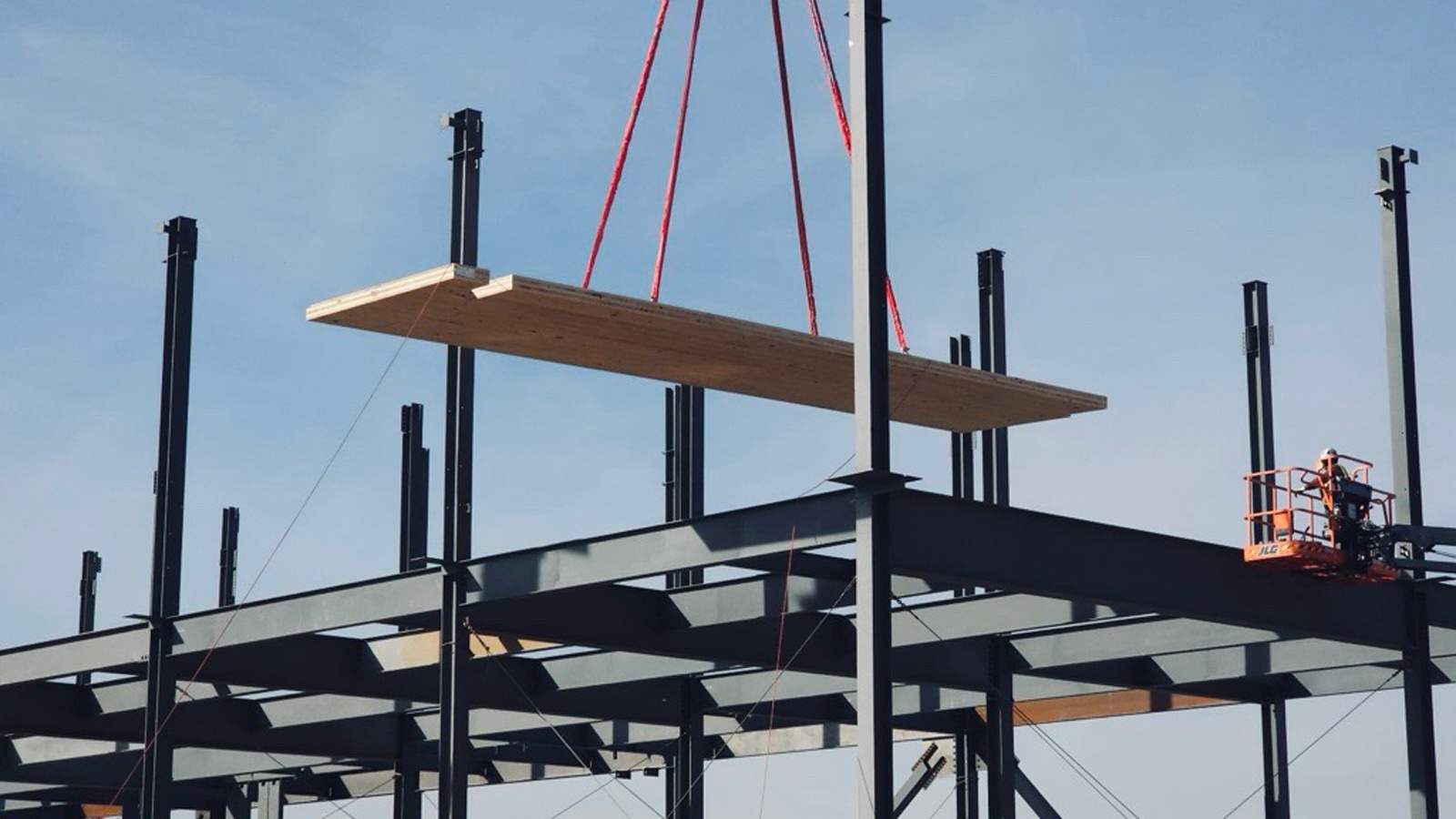
Jack Loughran Mon 4 Nov 2024
Collected at: https://eandt.theiet.org/2024/11/04/microsoft-builds-datacentres-out-wood-bid-cut-its-rising-carbon-emissions
Microsoft has started building data centres using fire-resistant wood in an effort to cut carbon emissions and use more climate-friendly building materials.
Engineers are using a material known as cross-laminated timber (CLT) in combination with steel and concrete, which it estimates could reduce the embodied carbon footprint of two new data centres by 35% compared with conventional steel construction, and 65% compared with typical precast concrete.
Because engineered wood is naturally low in carbon, abundant and easy to manufacture, CLT has been in increasingly wide use in the US and Europe, where it has been a staple of green building for at least a decade. In 2021, Microsoft built its new Silicon Valley headquarters out of CLT, as part of the company’s first large-scale use of the material.
CLT is made by gluing together three to nine layers of timber stacked in alternate directions, and then pressing them into a solid panel. Unlike steel, which deforms and fails more quickly under high temperatures, CLT develops a layer of char that provides insulation and maintains the integrity of the structure for longer.
Two Microsoft data centres under construction in Virginia used CLT to test the material’s effectiveness. The firm intends to be ‘carbon negative’ by 2030 – taking out more carbon from the atmosphere than it emits – and by 2050 wants to remove from the atmosphere the equivalent of all the carbon the company has emitted since its founding in 1975.
These goals were originally announced in 2020, but the firm’s emissions have risen rapidly since then – by an estimated 30% – due to its increasing use of AI and the high power the technology requires.
In response, Microsoft said it has launched “a company-wide effort” to accelerate its decarbonisation efforts. “It’s an all-hands-on-deck task,” said Jim Hanna, who leads sustainability for Microsoft’s data centre engineering team.
The firm said it was also requiring contractors to use other low-carbon materials, and high-volume suppliers would need to use 100% carbon-free electricity by 2030.
“A lot of our suppliers are on the same journey as we are,” said Richard Hage, who leads global strategy for data centre engineering at Microsoft. Everyone is “implementing key initiatives to lower the embodied carbon of their materials and their products”.
Prefabricated offsite, CLT can be installed more quickly and safely than corrugated steel used in large commercial buildings, said David Swanson, a structural engineer who works on Microsoft data centre design.
Earlier this year, Microsoft signed a controversial deal with energy firm Stockholm Exergi to help it meet its net zero ambitions by absorbing emissions from biomass power plants.

Leave a Reply